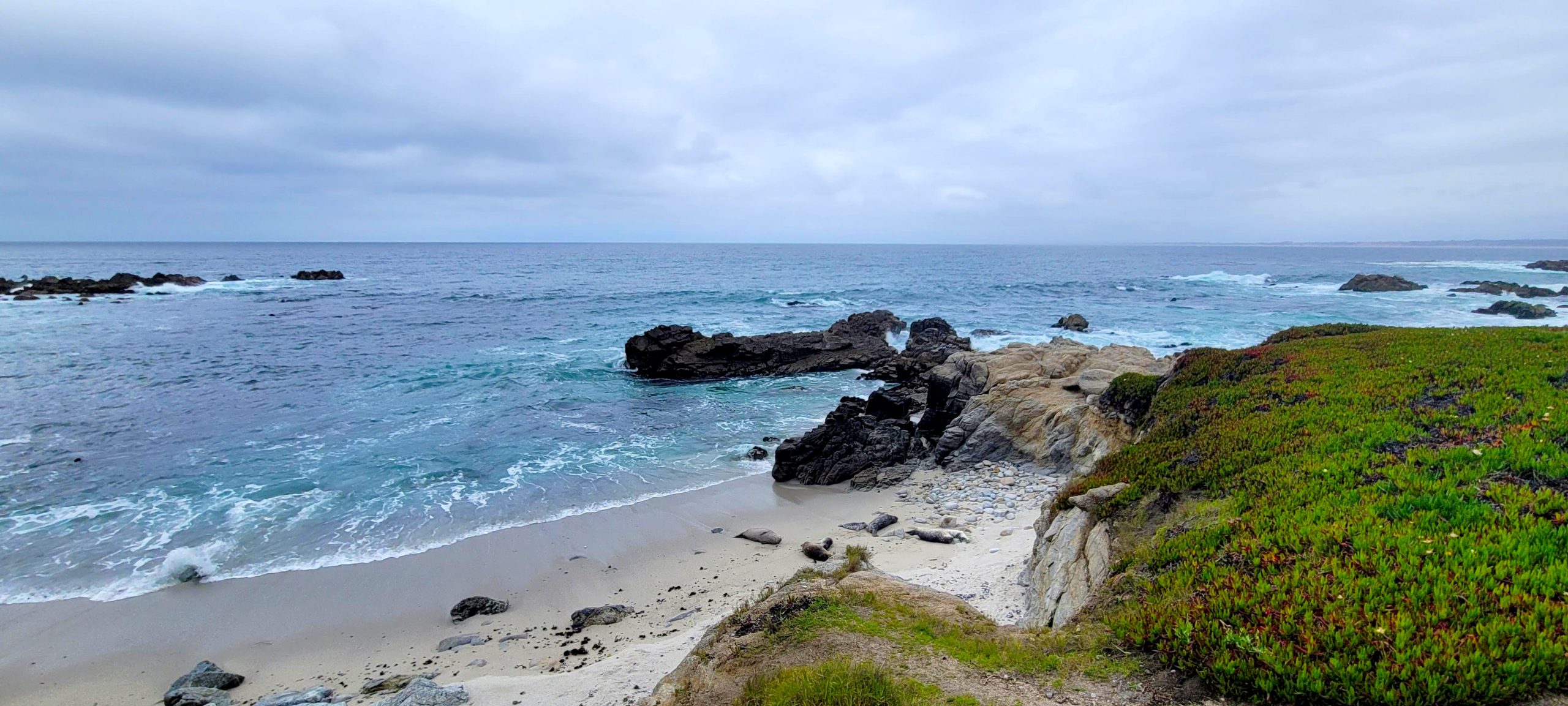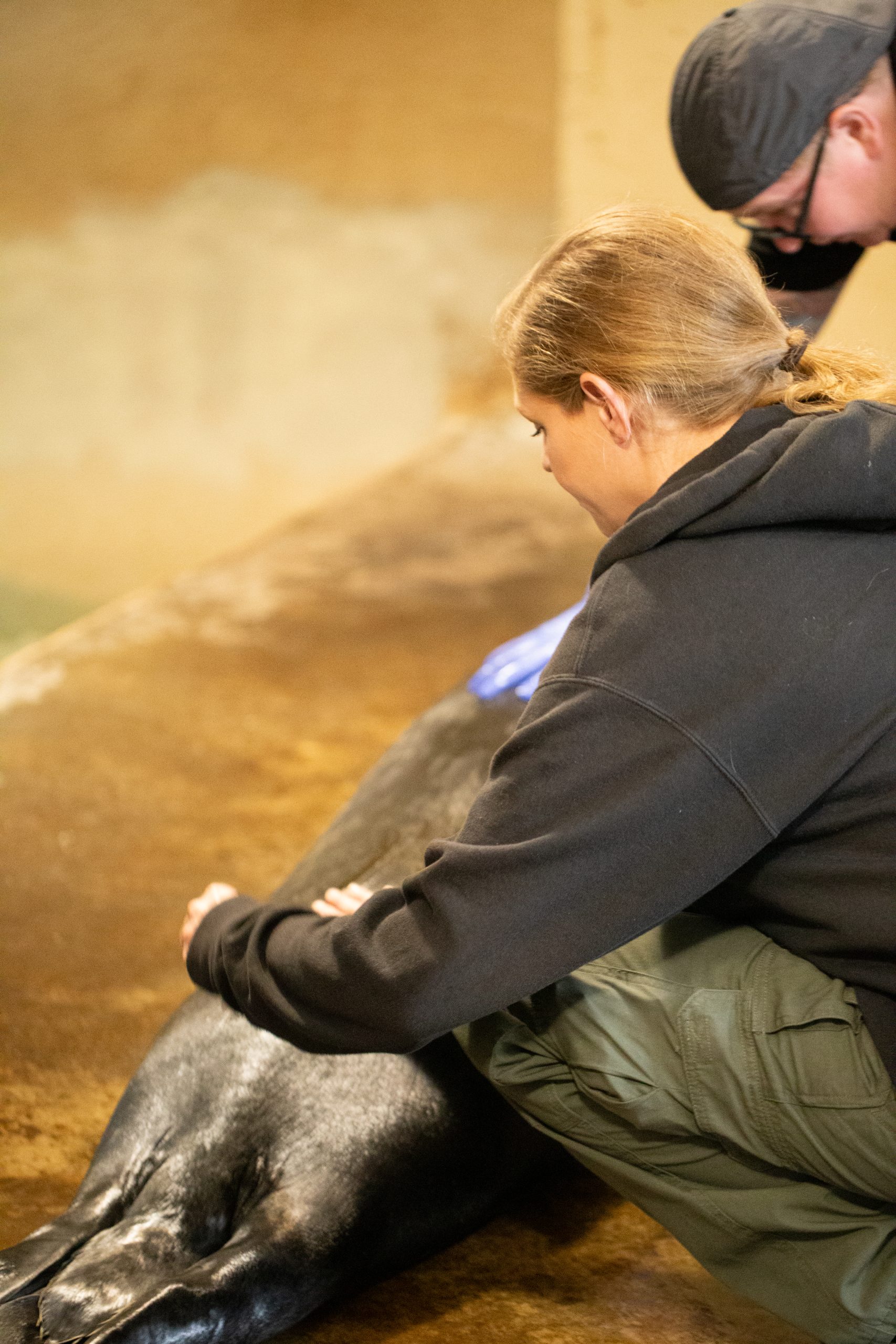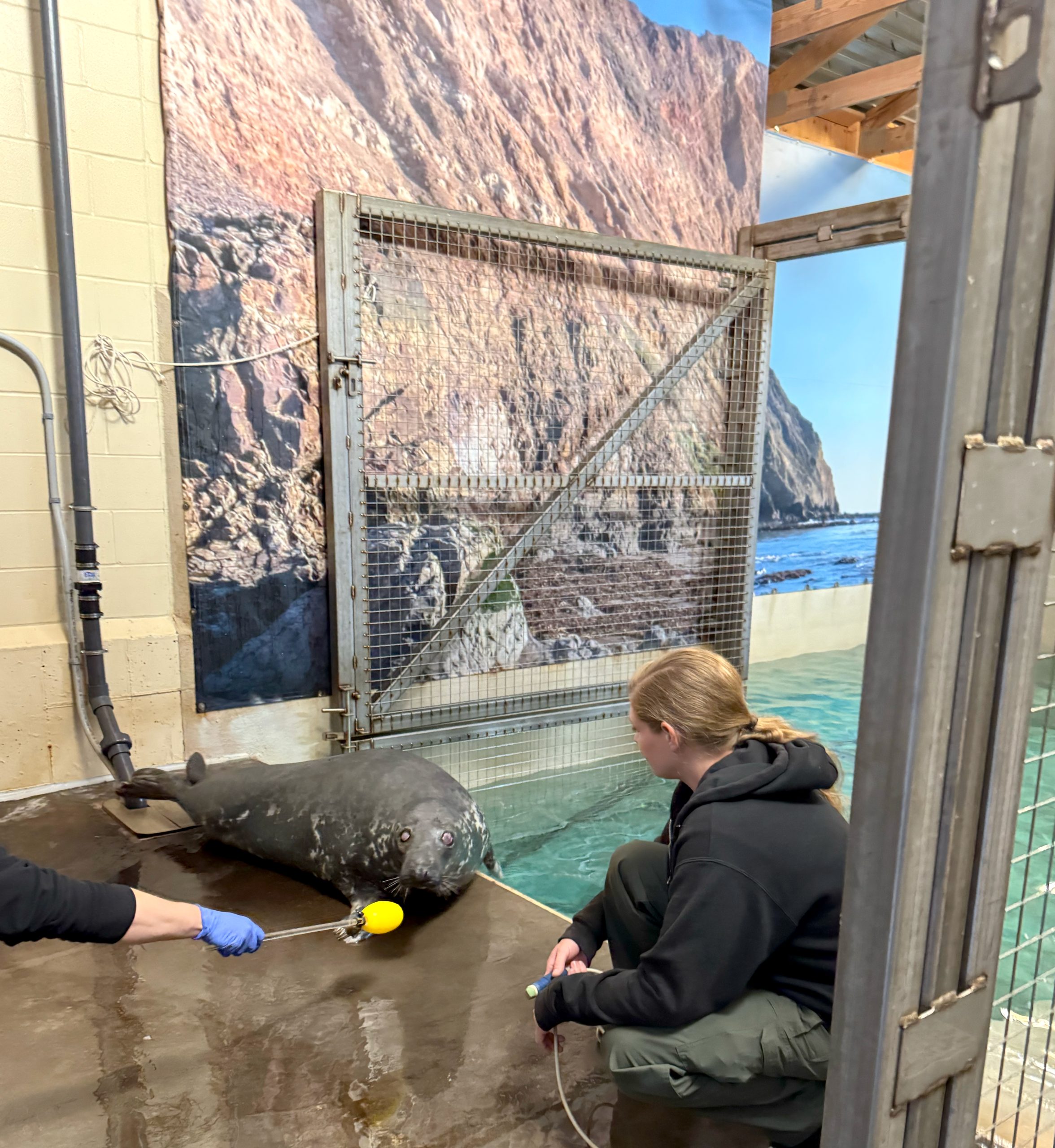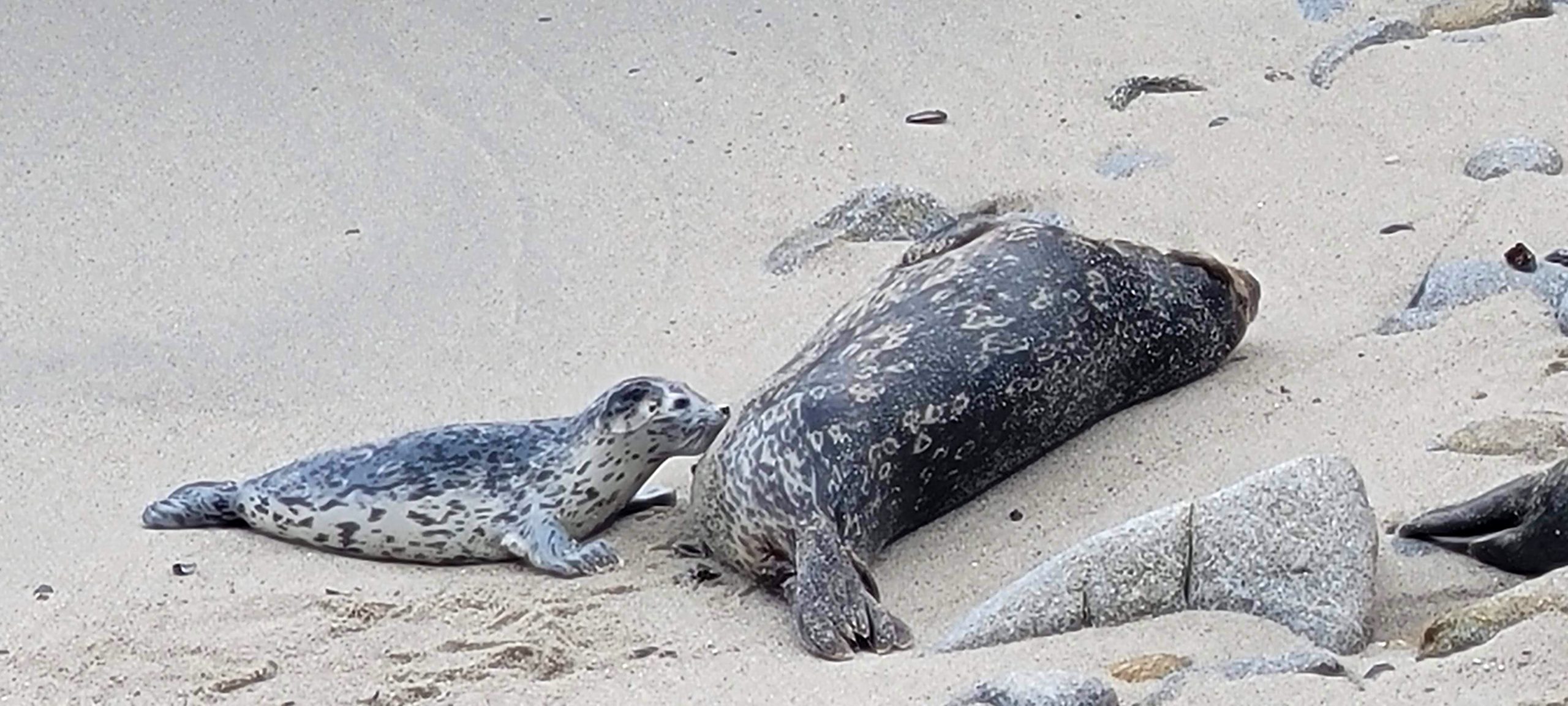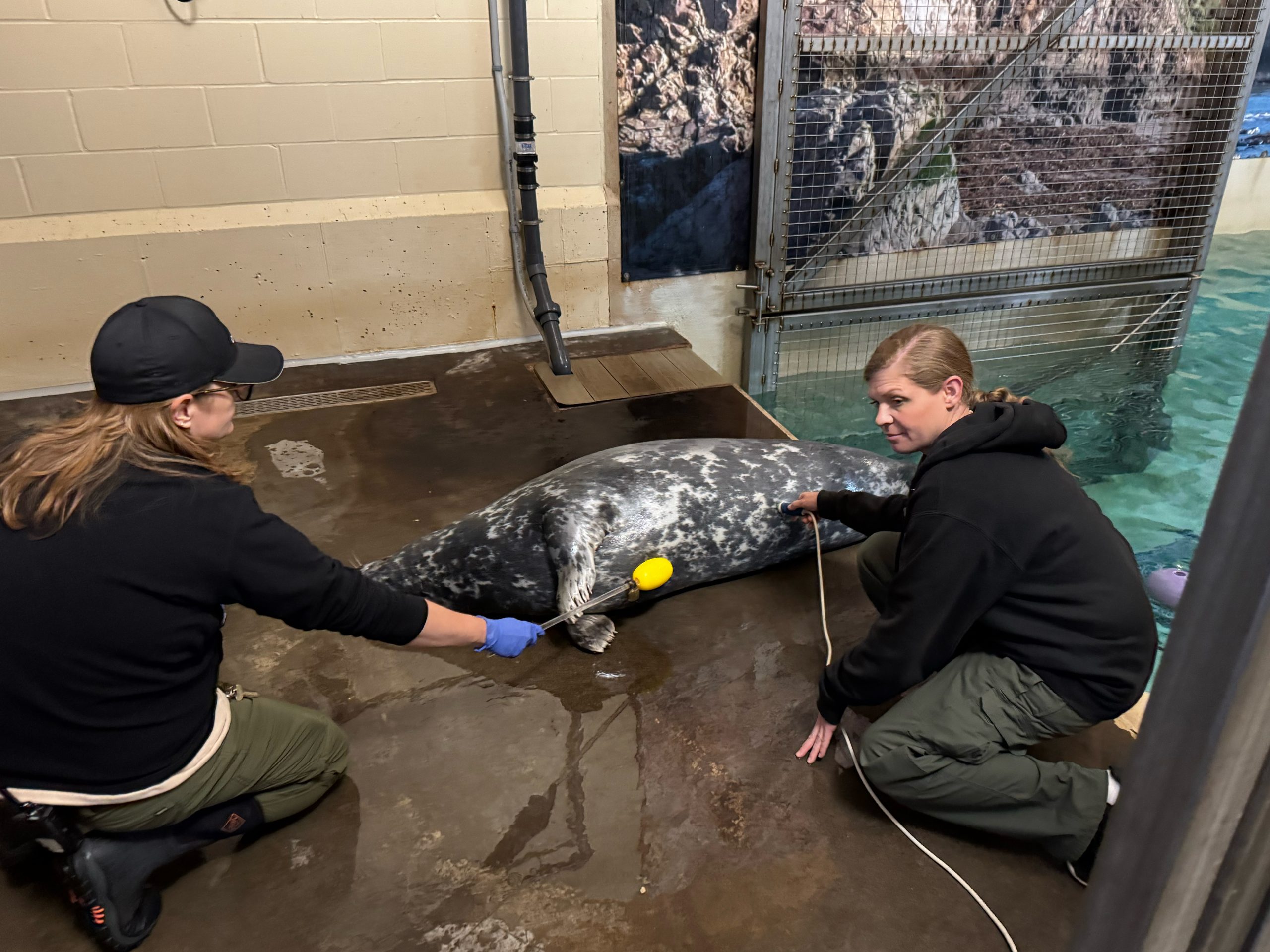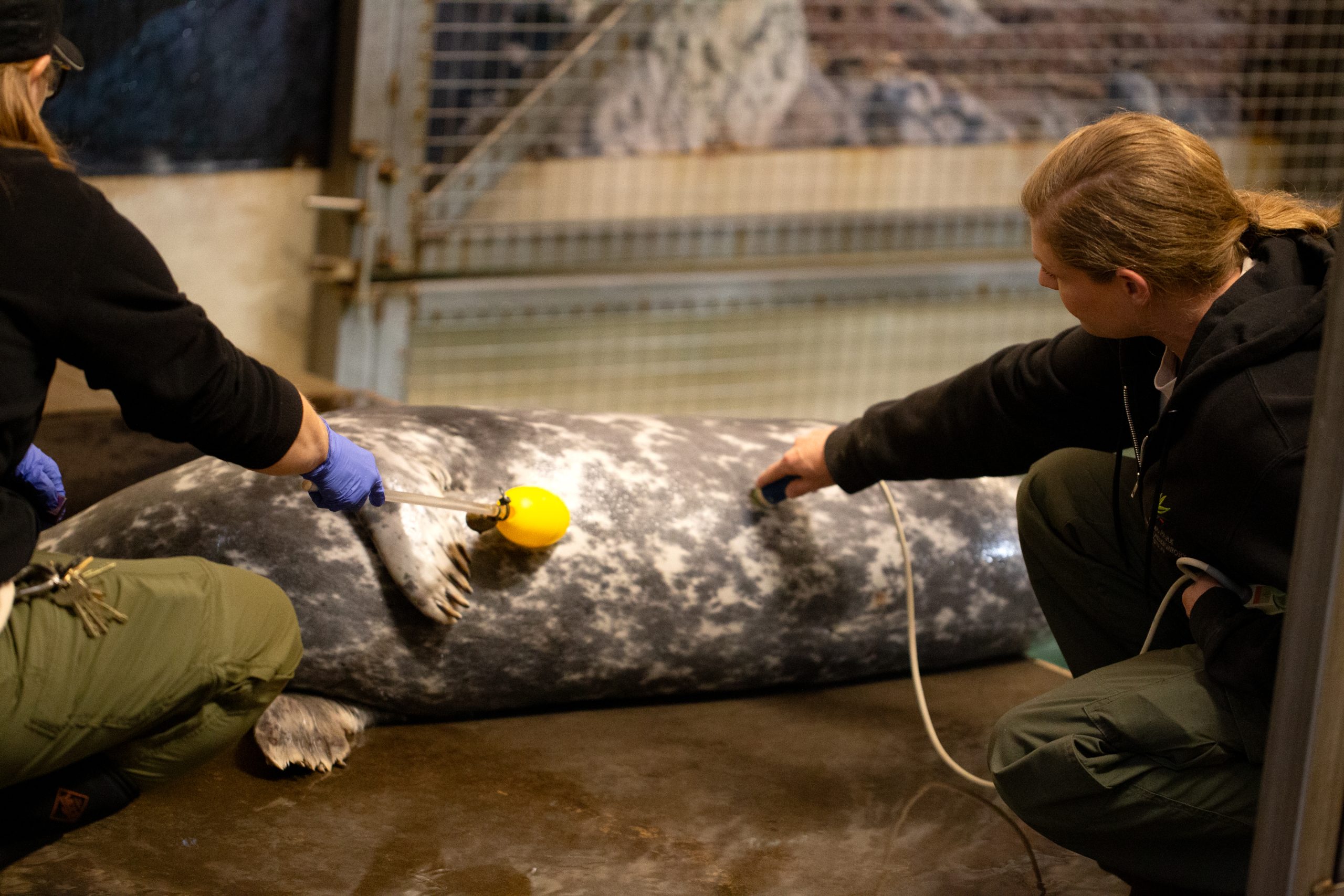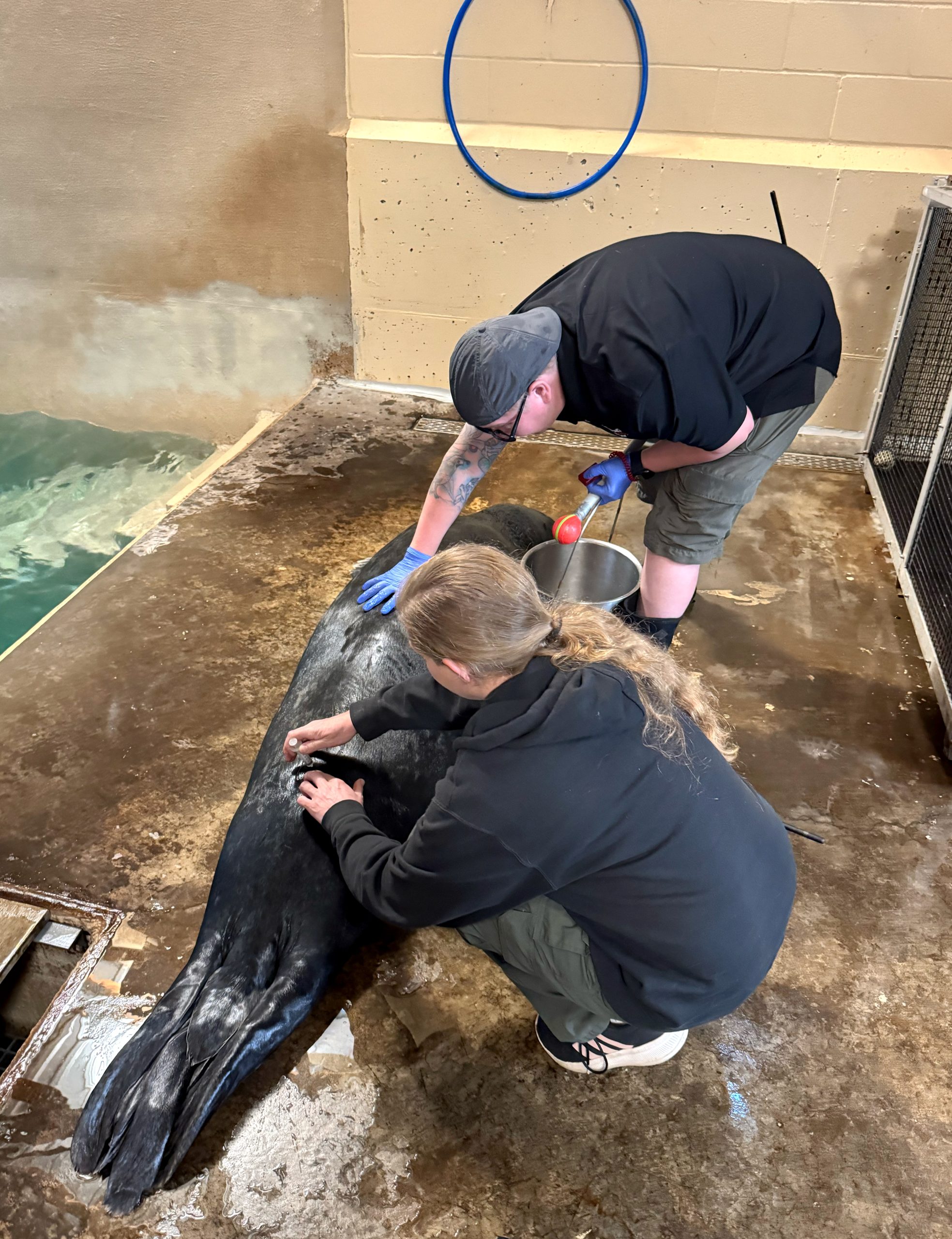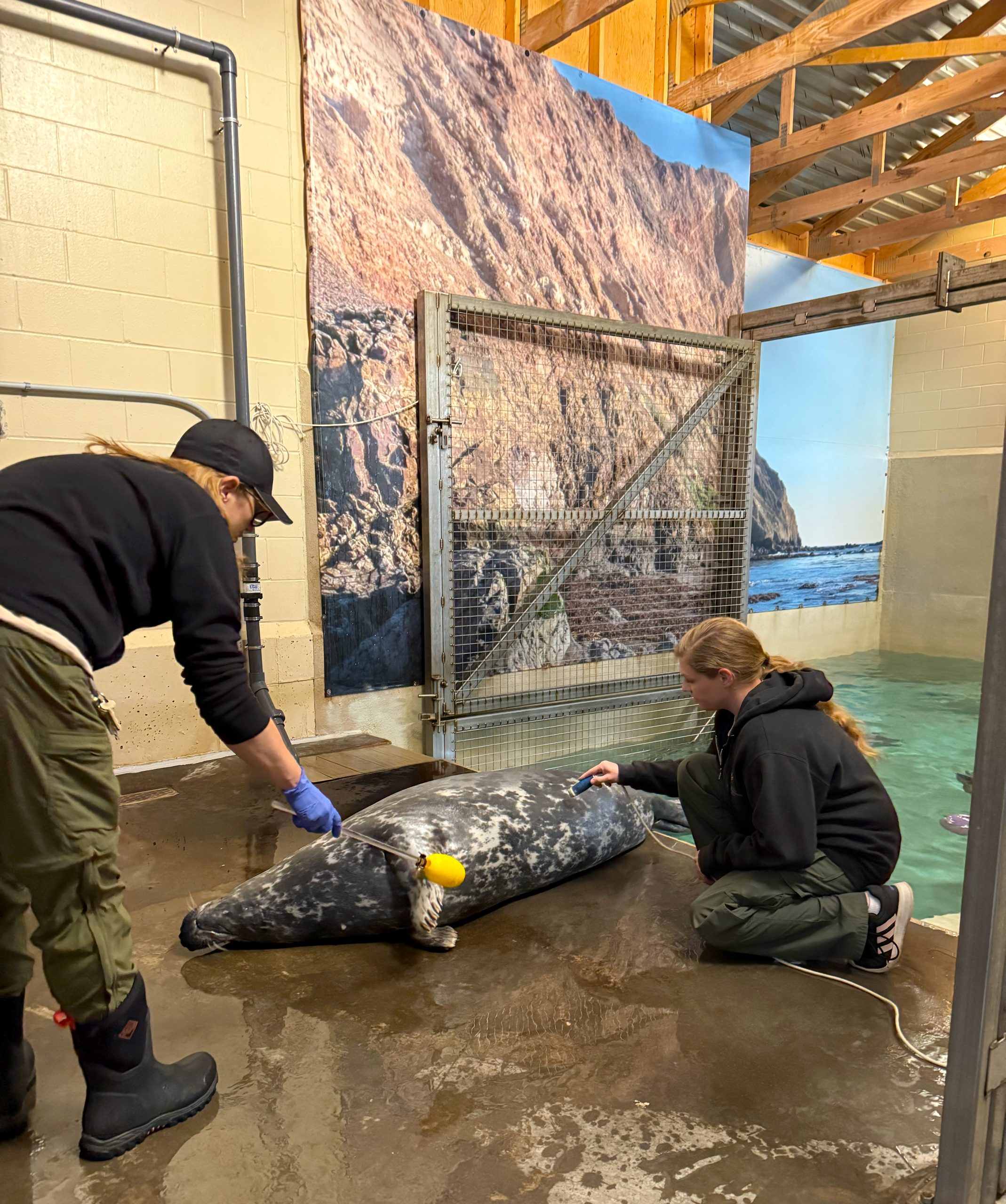Conservation Champion Andrea Persson traveled to Sausalito’s Marine Mammal Center to learn the secrets of seal and sea lion care
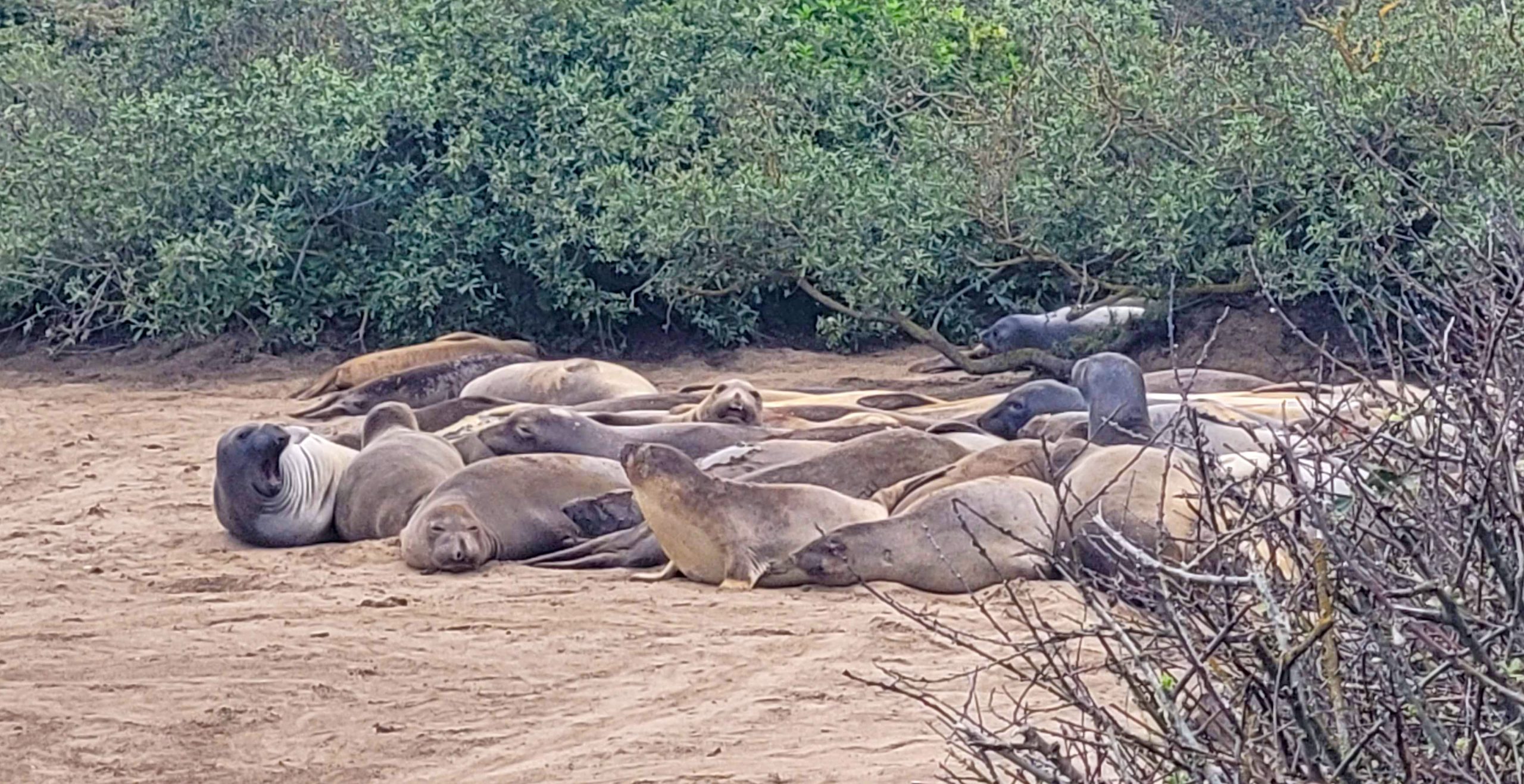
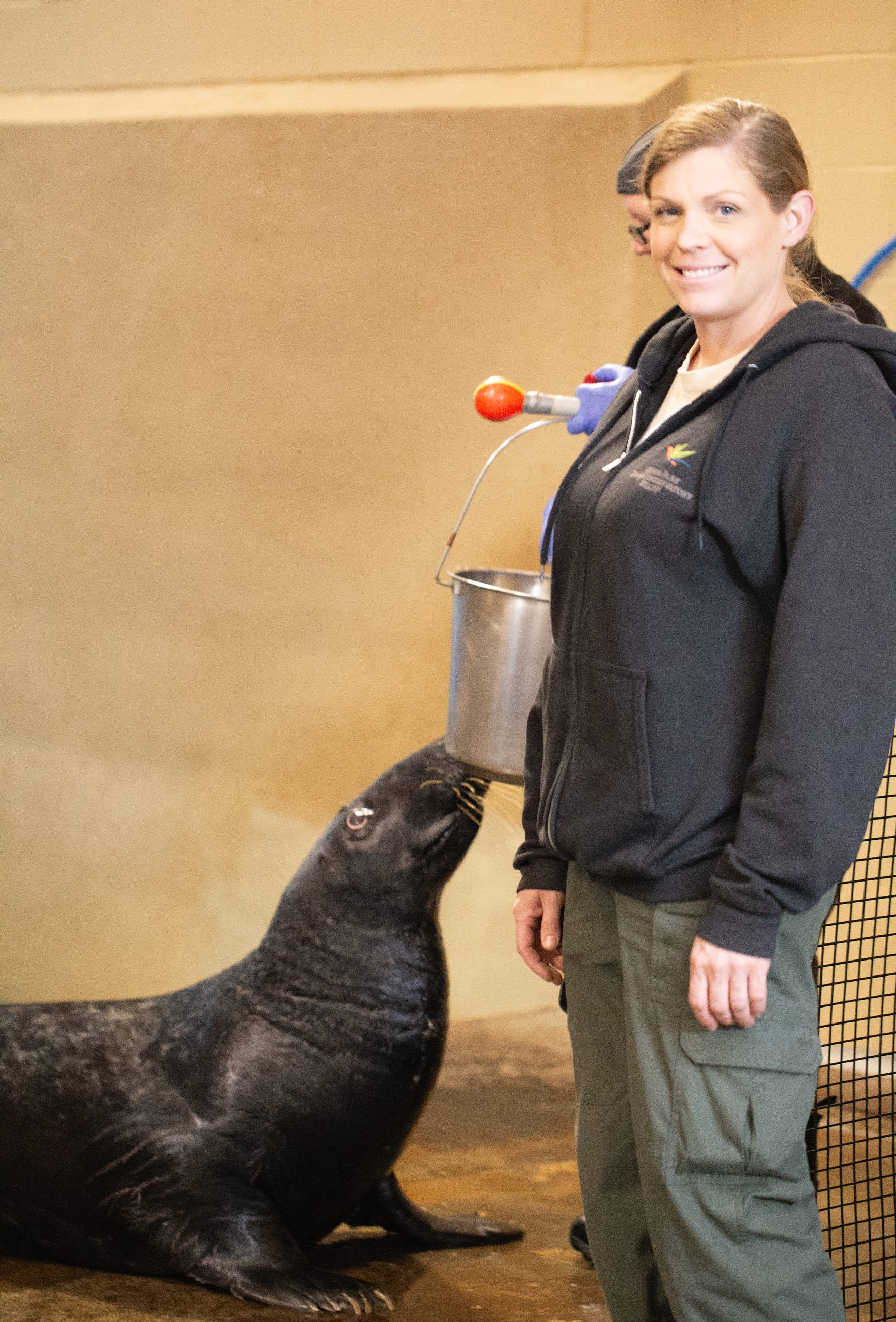
If you’ve been to a Blaze Sparky Show at Como Zoo, you know that sea lions like Sparky are capable of some amazing feats, from diving nearly 60 stories below the ocean’s surface, to holding their breath for up to 20 minutes at a time.
But some of the adaptations that work swimmingly in the sea can make veterinary care very complicated for seals and sea lions, particularly when it comes to anesthesia and other medical interventions. “They’re so trainable and willing to participate in their own health care that you can accomplish quite a lot when they’re awake,” says Como Zoo veterinary technician Andrea Persson. “But it can be much trickier when they’re sick and need to be immobilized, in part because of the dive response that allows them to conserve oxygen and also because we just don’t have to do it very often.”
That’s why Persson recently traveled to Sausalito, California, to attend an intensive veterinary training program at the Marine Mammal Center, the largest marine mammal teaching hospital in the country. Made possible by a grant from Como Friends’ Conservation Champions program, the five-day program allowed Persson to support the Center’s work, rehabilitating stranded seals and sea lions, while learning veterinary tips and tricks from experts who provide daily care to more than 80 elephant seals, harbor seals, and sea lions.
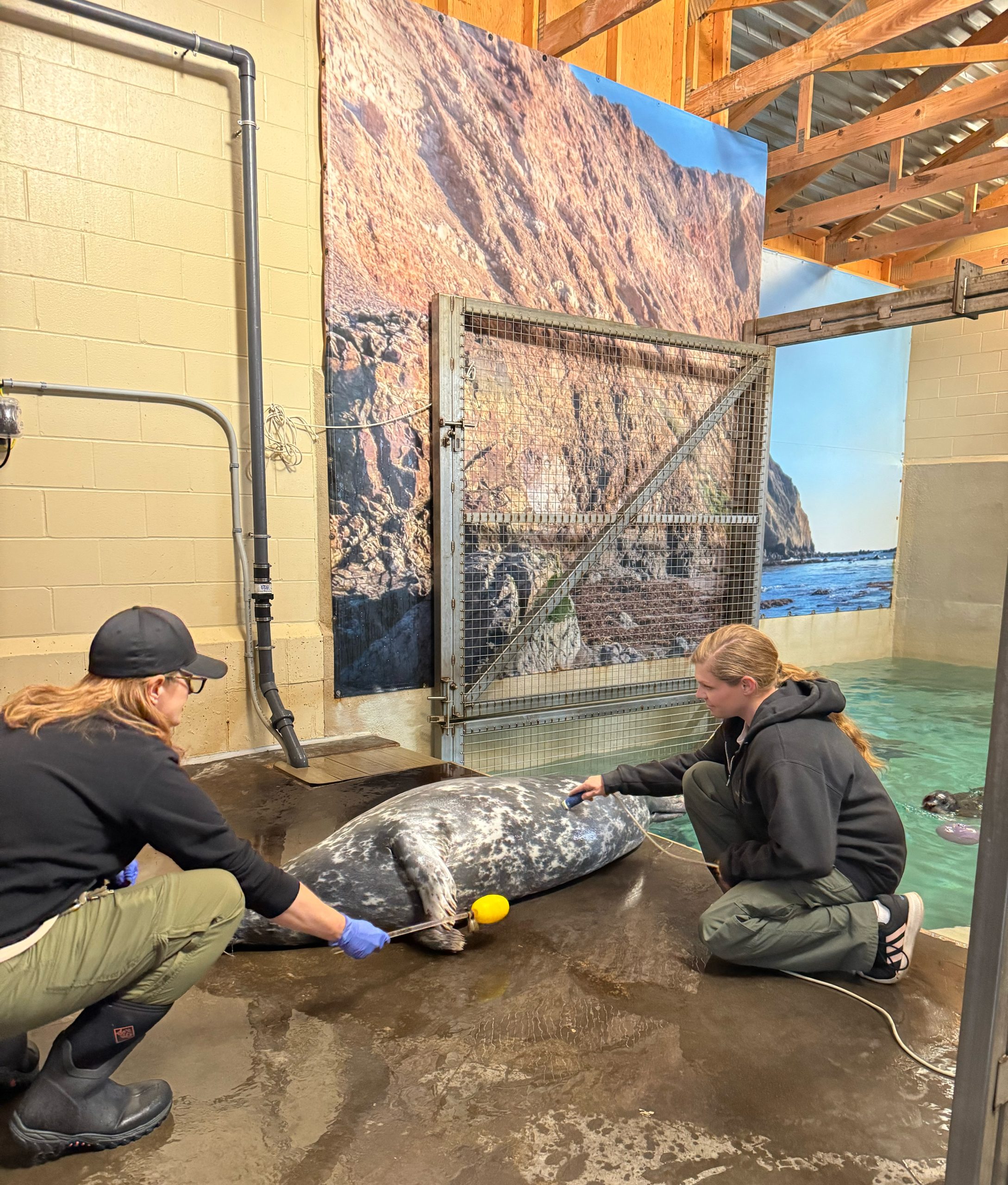
“Part of their mission is to expand the number of veterinary professionals that are equipped to deal with seals and sea lions, and it was a great opportunity for me to get concentrated hands-on experience,” says Persson, who cares for hundreds of different species at Como Zoo as part of her work with Como’s new on-site veterinary team. “One of my main objectives was to get good at collecting blood, because it’s one of the most important diagnostic things we can do with an animal, but it’s probably something I’ve done less than 10 times on a seal in my 20-year career.”
Drawing blood from a seal requires making a puncture near the animal’s spine. “One of my main objectives was to become proficient in blood collection. Blood samples are very important in providing information on the health of the animals we care for and with our relatively small population of seals at the zoo I had limited opportunities to refine my venipuncture techniques. It was great to be able to collect blood on multiple animals each day while I was at the MMC and I am now very confident in my ability to collect blood from our animals at the zoo.”
Since 1975, the Marine Mammal Center has rescued more than 26,000 marine animals along 600 miles of California coastline and in Hawai’i, typically answering more than 10,000 distress calls about sick, injured, or entangled marine mammals every year. During Persson’s stay in April, the Center was providing safe harbor to dozens of orphaned elephant seal pups, which are born at about 75 pounds and weigh nearly 300 pounds just a month later when they’re fully weaned from their mothers. In spite of their impressive size, young seals can often be separated prematurely when strong storms wash them off of beaches before they’ve learned how to survive on their own. Climate change makes the problem worse, as rising sea level and storm surges are more likely to sweep mothers and pups away from each other.
Distressed elephant seal pups are routinely rehabilitated at the Marine Mammal Center, but before they can be returned to the ocean, they need to be taught how to eat an adult diet of fish, squid, krill, and algae. “But you have to do it in such a way that you’re not habituating them to people,” says Persson. “It’s very difficult to get them to eat, because if they get even a little bit of water in their mouth with the fish they don’t know what to do, and they start gagging.”
The time Persson spent with pinniped pups may soon come in handy thanks to a new breeding recommendation for Como Zoo’s Atlantic gray seals, Wally and Medusa. And getting the chance to see wild harbor seals and sea lions on the California coast gave her even more appreciation for the species. “I would say the whole experience was invaluable, and gave me so many ideas to bring back to Como Zoo to improve care for our animals,” says Persson. “I’m very grateful.”
Private contributions from people like you are critical to support conservation efforts at Como Zoo and in the wild. Thank you!
